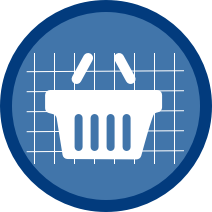When COVID-19 first struck, nobody knew what to expect. The instant reaction was to protect staff and then to batten down the hatches. We immediately instituted a daily 'war room' to monitor what was happening to online demand and sales for our ecommerce clients. This proved decisive because some clients suggested cutting their marketing spend when in fact demand was starting to increase as sales shifted online with people woring from home or going into furlough.
We then saw a clear differentiation in fortunes for online retailers:
- Food Essentials
With shortages hitting the supermarkets for staples and an unwillingness to visit stores, some food retailers were seeing a huge 6-fold increase in orders. - Home & Garden DIY
With furlough and homeworking, it was time to get all those jobs done around the house and in the garden. Retailers selling DIY or home improvement products also saw increases doubling or better in some cases, with certain ranges selling out. - Hobbies & Leisure
With the kids facing a long layoff it was clearly important for parents to find a way to expend their energy! Trampoline sales were particularly strong as you might imagine. Hobbyists were busy adding to their collections, with motorbike and car parts soaring as tinkering in the garage filled up the time. - PPE (Personal Protective Equipment)
Anyone selling any form of PPE saw huge increases in demand that could not be met via supermarkets or other stores. Well-placed vendors included dental supply companies for hand santisers, masks and gloves.
Sectors that saw declines included specialist food and drink, department stores, clothing, footwear, furniture and carpet firms. Affected SME business owners then began thinking about how they could modify their current business or diversify into other areas to protect themselves in the future.
This was part of focusing on the robustness of their sales channels. With distribution facing disruption and dealers / stockists closing down physical locations, there was a new opportunity to sell direct to consumer (DTC) for manufacturers. Additionally, expanding international sales meant that as countries recovered there was an opportunity to recoup drops in sales as pent-up demand returned.
Looking internally, businesses also began to question process efficiency especially with staff rotating in and out of the business or having to work from home. This combined with having better systems for production demand and supply and accurate inventory control. We will explore this in more detail in a future article.

